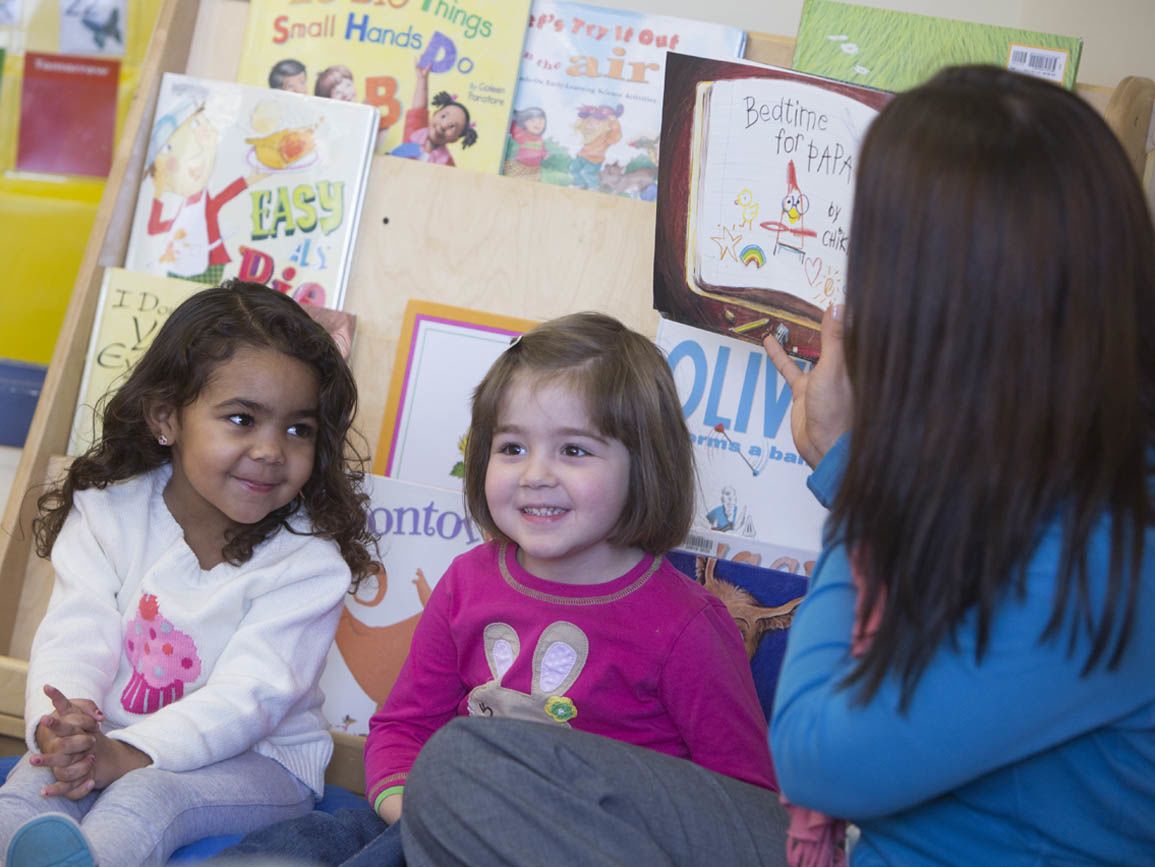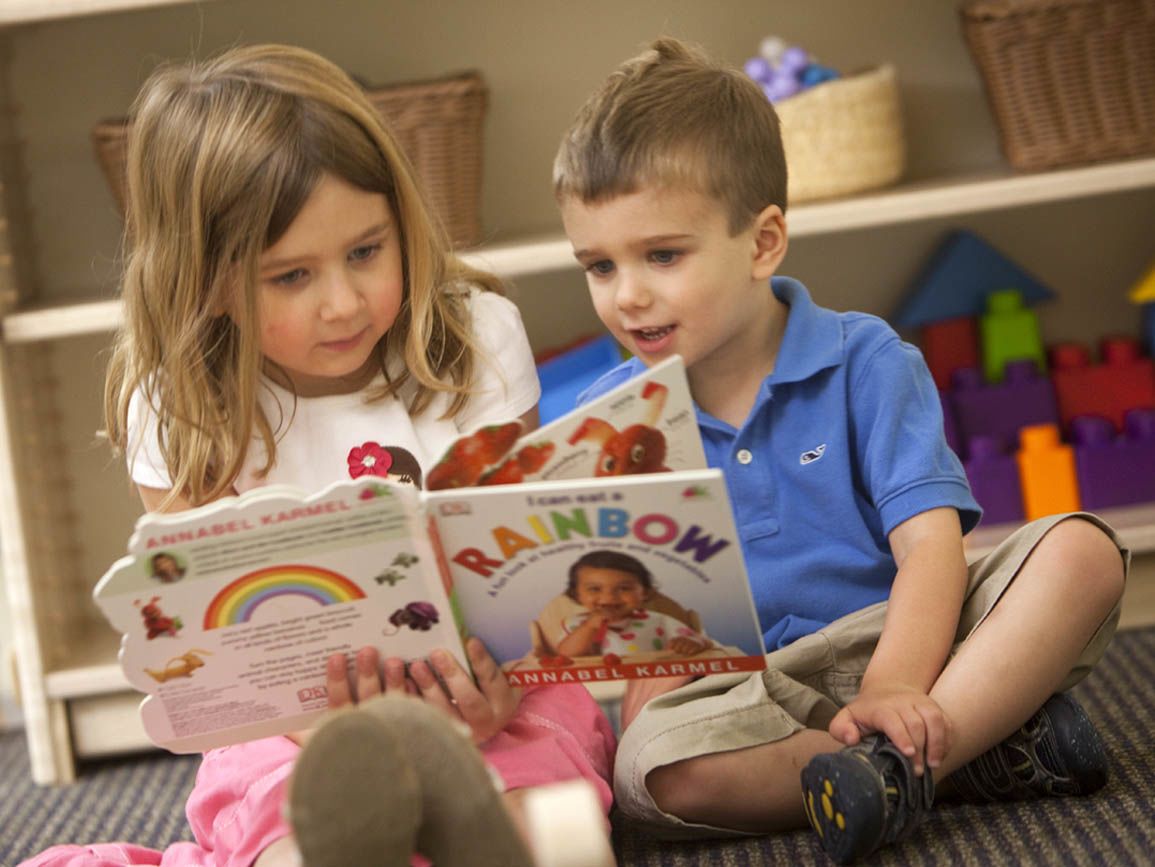You know the routine: pajamas on, teeth brushed, and then it’s time for bedtime stories. Bedtime stories are a time-honored tradition for so many reasons:
- Bedtime readings offer a soothing transition from active play to sleep.
- Reading together creates positive feelings and strengthens relationships.
- Read-alouds are one of the very best ways to boost early language and literacy development and begin a lifelong love of language and reading.
Learn how children’s language and literacy development unfolds and how to use bedtime reading to maximize the benefits of reading together at every age.
Reading to Babies
Even very young babies enjoy hearing stories. Choose sturdy board books or fabric books with photos or simple illustrations. Sit with your baby on your lap and point out the pictures. Don’t worry about reading every word. Just follow your baby’s lead. When they lose interest, put the book down for another time.
Reading to Toddlers
Toddlers are often very interested in stories and may bring you favorite books to read throughout the day. Keep a selection of sturdy books where your child can access them and rotate them occasionally. Don’t be surprised though if your child asks to read a beloved book over and over again. Repeated readings might try your patience, but they’re great for building vocabulary and helping children master story structure.
Vary readings based on your child’s interest. Point out rhymes or alliteration and comment on relatable elements, e.g., “Look, he has a rubber duck just like you do.”
Reading to Preschoolers and Beyond
As children get older, they can listen to longer, more complex stories. Preschoolers understand how to handle a book and like to turn the pages, follow the pictures, and even repeat words they’ve heard in the story. They can also begin to understand concepts like beginning, middle, and end and character development.
Don’t get too complex, but occasionally ask thought provoking questions about your reading, e.g., “I wonder how she felt. What would you do if you were her?” Point out letters and words or mention how words run from top to bottom and left to right. Keep it fun and light, though, and focus on your child’s interest and creating a cozy, relational moment. Five- and six-year-olds can begin to help you read simple stories and may be ready to hear early chapter books.
Children’s literary development changes and grows as they get older, but no matter the age, keep three points in mind:
- The ritual of bedtime stories provides numerous benefits. Enjoy it and try to make it a consistent part of your evening as much as possible.
- The warm, nurturing moments of bedtime stories are as important for your child’s development as the reading of the story.
- Your child’s love of learning develops as you adapt your reading to their needs. Offer high-quality children’s books, read them with interest and engagement, and let your child set the pace.
For more information and tips on how to start growing your child’s love of reading, visit Growing Readers.





